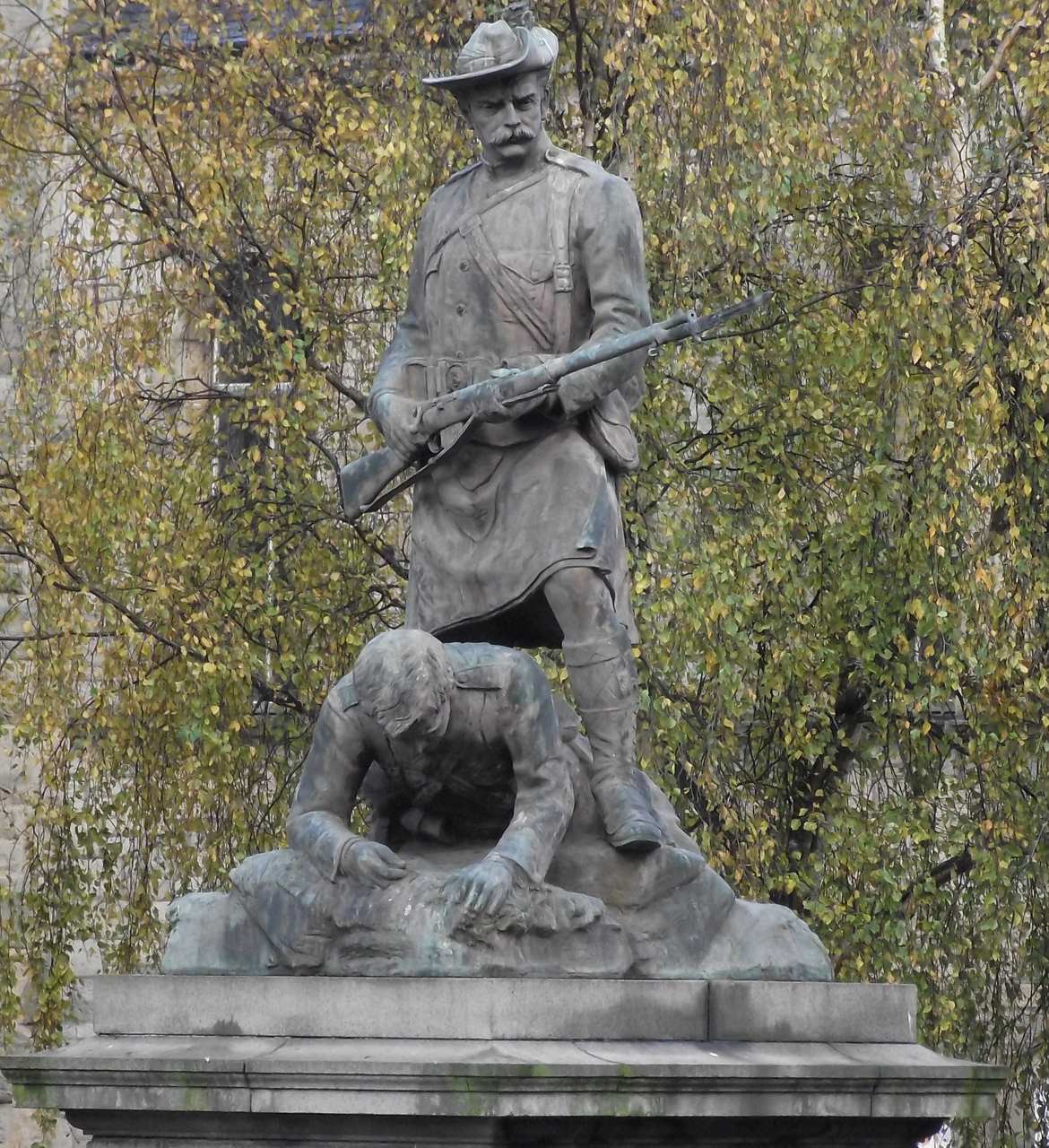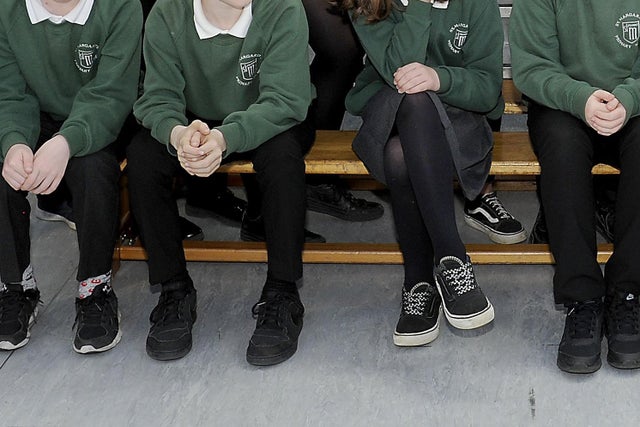This story explores the history and symbolism of the Denny and Dunipace war memorial.
Peace and Victory
Nine hundred and two of Denny and Dunipace’s sons went to fight for King and Country during the Great War. After the Great War a Heroes fund was set up with three objectives: to recognise the men who had won Navel or Military decorations, “a public welcome to the boys on the conclusion of the war,” and the “erection of a permanent memorial” to the 154 “sons…who… laid down their lives in…[the] greatest of all wars” (Falkirk Herald 1918).
In 1920 Mr Rankine, the secretary of the War Heroes Memorial Committee, submitted a sketch of the proposed memorial by renowned Scottish Sculptor George Henry Paulin A.R.S.A. Other noticeable works by Paulin include Andrew Carnegie’s gravestone, the Memorials to the Machine Gun Corps and Royal Tank Regiment in London, and the 51st (Highland) Division Memorial. Denny and Dunipace’s memorial is a kneeling feminine figure (Paulin had a preference for this) cast in bronze characterising both Peace and Victory, both prevalent common figures incorporated in War Memorials. The representation of Peace derives from Denny and Dunipace’s Burgh Seal, which includes the Angel of Peace, as the burgh was said to be the setting for three important peace treaties.
The first of these treaties was in the third century A.D. between the Caledonii and the Roman Emperor Severus. In 1298 a parley between Sir William Wallace and Robert the Bruce after the Battle of Falkirk was held and finally, in 1301, King Edward I of England signed a warrant authorising a truce with Scotland. The figure is also surrounded by “her trophies of war” (Bailey). These include a laurel wreath held in her outstretched hand, representing victory and immortality and a “broken sword… crushed underfoot” (Falkirk Herald) symbolising lives that have been cut short. The statue kneels on an imposing pedestal of granite, symbolising purity, situated on a “prominent terraced mound” (Falkirk Local History Society 2020) donated by Charles William Forbes of Callendar in the old Denny Cemetery. The names of the fallen from the Great War have been inscribed across three bronze plaques alongside their rank and regiment, as requested by the War Heroes Memorial Committee. The fourth plaque is inscribed with the following verse from John Milton’s Samson Agonistes.
“Nothing is here for tears, Nothing to wail
Or knock the breast: no weakness, no contempt,
Dispraise, or blame; Nothing but well and fair,
And what may quiet us in a death so noble.”
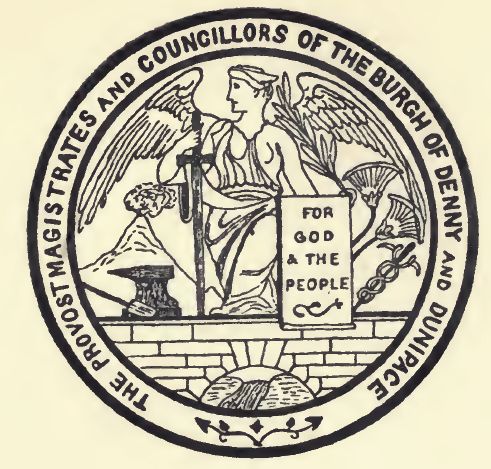



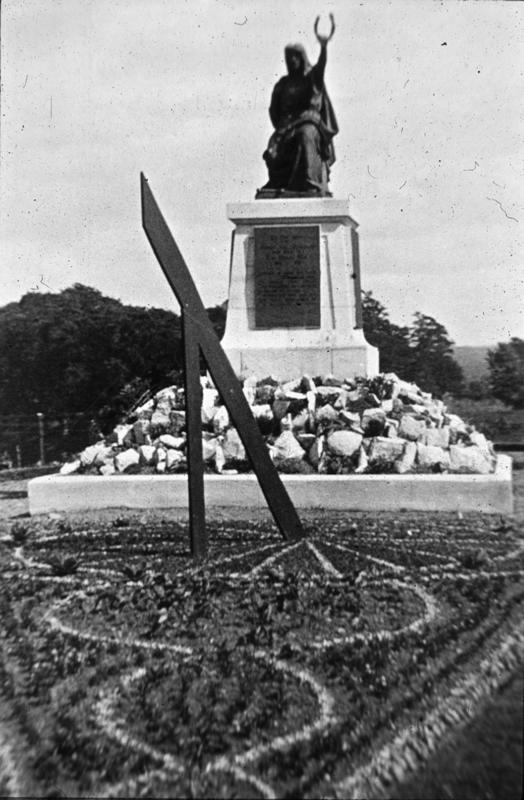

Unveiling the Memorial
On 6 May 1922, Denny and Dunipace’s tribute to the fallen was unveiled to the public during an “impressive ceremony” (Falkirk Herald 1922). A procession led by a variety of local groups, members of public bodies, relatives of the fallen and members of the general public marched from Denny Cross to the Cemetery. As a mark of respect, the Town Council advised all blinds in houses and shops were drawn, and all “public activities were to be suspended during the period of the service” (Falkirk Herald 1922). The memorial was officially unveiled by His Grace the Duke of Montrose. He removed the Union flag draped over the monument; at the same time, three “volleys were fired by the Territorials” (Falkirk Herald 1922), and pipe-major Esplin played the lament.
In 1948 the Town Council held a public meeting regarding a memorial to commemorate the 58 of Denny and Dunipace’s sons who lost their life’s during the Second World War. The memorial to these men consists of a granite block “projecting about 2 foot 6 inches from the face of the plinth foundation” (Falkirk Herald 1950) of existing memorial. The memorial to the fallen from the Second World War was unveiled by Sir Ian Bolton His Majesty’s Lieutenant for the county of Stirling on Remembrance Sunday in 1950 after services in St Alexander’s R.C. and the Denny Old Parish Church, and a procession from Duke Street to the Cemetery. At a later unknown date, a further bronze strip was added to the memorial to commemorate the death of a man who lost his life during the Korean War.
Due to the remoteness of the memorial, copies of the plaques were made and placed on a wall on Church Walk in the then-new town centre in the 1960s. This memorial was then later moved to Broompark Church, before the construction of the current Denny Town Centre.
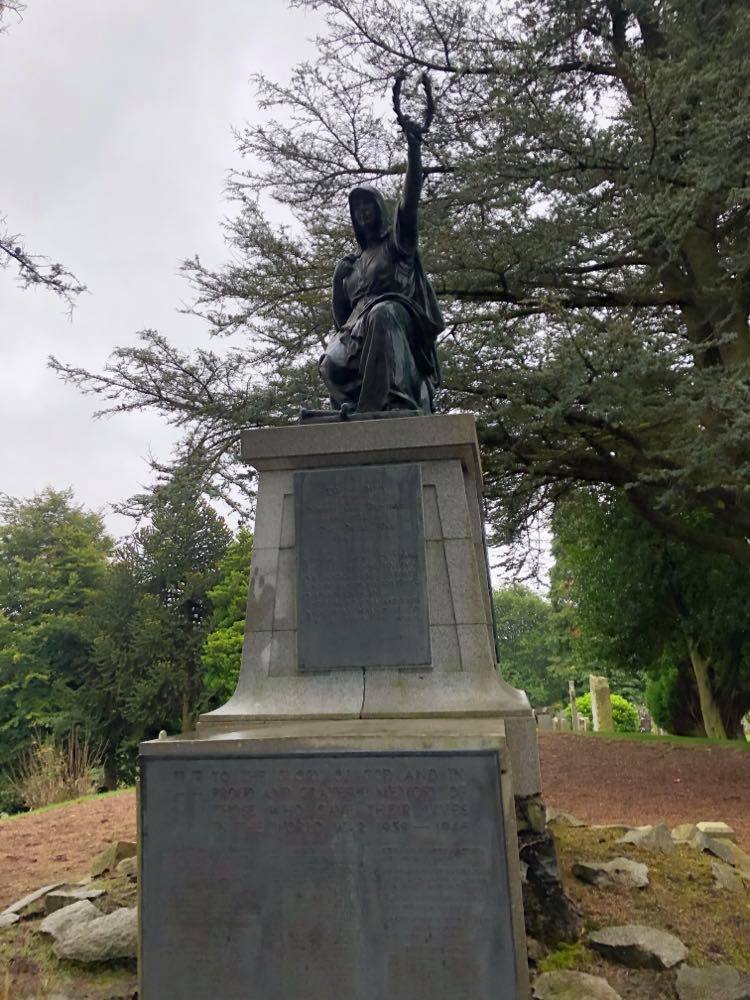

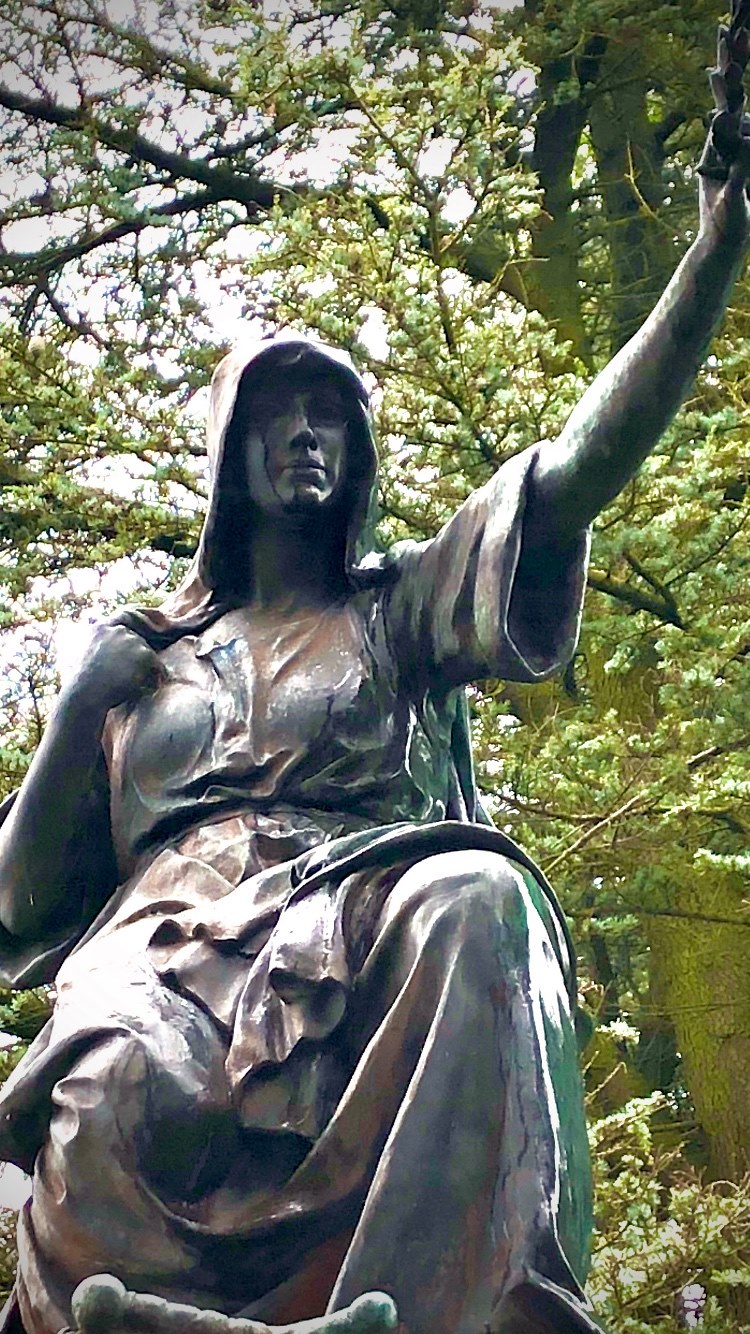

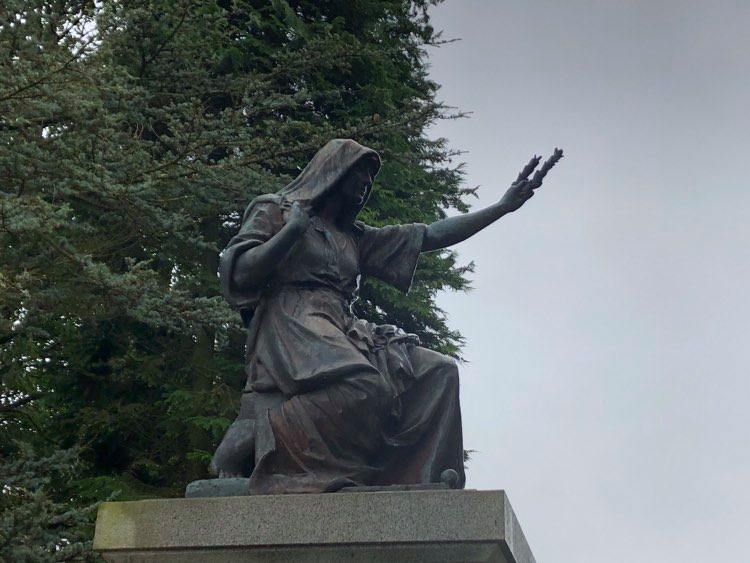

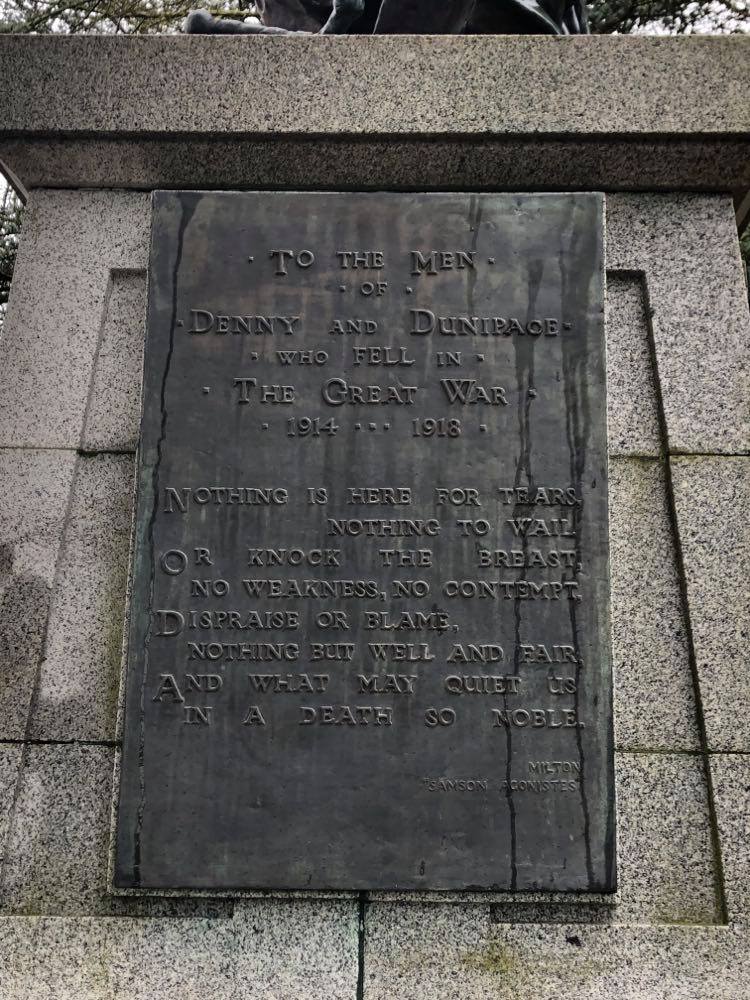

By Lorna Keddie, Great Place volunteer 2020. Hidden Heritage Online: Statues and Monuments project.
